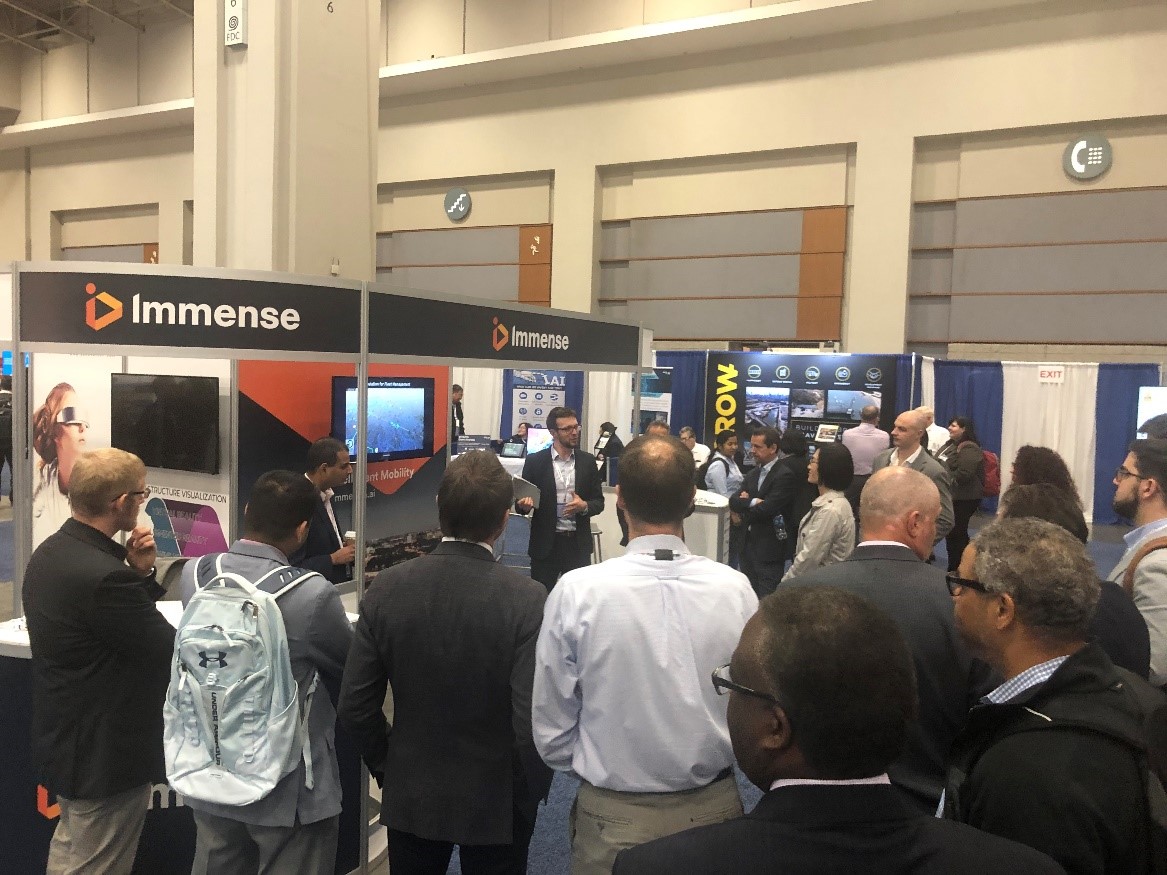TRB Wrap-Up – The Major Trends for 2020

January has been a busy month for Immense in the USA, with the team exhibiting for the first time at the Transportation Research Board (TRB) Annual Meeting in Washington DC. This year marked the 99th Annual Meeting which coincided with the beginning of the TRB’s centennial year.
In our DNA
Long before Immense was a glint in our founders’ eyes, the TRB has recorded the pulse of the latest transport technology, research and industry practices from around the globe. In recent years, there has been a growing focus on new mobility solutions, including automated, connected, electric and shared vehicles. These trends, and the rising global demand for simulation tools to support decision making across the public and private sector, continue to drive our work at Immense.
Major trends
The TRB attracts around 13,000 attendees with topics ranging everything including highway design to airport operations to regional planning, traffic management and fleet operations. Our snapshot of some of the eye-catching trends includes:
- New mobility services and vehicle technologies (including shared, connected, electric and autonomous vehicles) continue to mature as the public and private sectors test and learn how to work together to deliver the best outcomes for citizens. Public transportation bodies and regional transport organisations strive to ensure these services work in synergy with existing public transport (PT) systems and deliver on the aspiration for an integrated Mobility as a Service (MaaS) offering – something which still proves elusive from an implementation perspective. Crucially, these new services and vehicle technologies present an excellent potential to provide easy and cost-effective first-last mile solutions between PT hubs and citizens’ places of home or work.
- New technologies, such as machine learning, artificial intelligence and computer vision, are evolving to tackle real-world transportation problems such as congestion and air quality. Examples included: real-time traffic predictions for operational control centres; processing movement information from vision-based sensors; and offering customised incident response plans for highway management. The use of these technologies is gaining significant interest globally, and to an even greater extent in the US market since the Executive Order on Maintaining American Leadership in Artificial Intelligence in 2019.
- Active travel and micro-mobility topics generate significant interest because of the potential health and environmental benefits and ability to provide complimentary first-last mile solutions to public transport or private vehicle journeys. However, there remain serious safety and legal barriers, and (as with new mobility services and vehicle technologies) these services are often modelled in limited detail before deployment – leading to operational and commercial challenges.
- Data enhancements continue to be used to investigate everything from travel behaviour and infrastructure operations through sensor data to new methods of data collection and data fusion. Many market leaders with innovative travel survey, mobile phone and app-based data sets are gaining momentum within industry and the public authorities, for example , INRIX and StreetLight Data who exhibited at TRB. Combined with incentives or efforts to nudge citizen behaviour, these tools will be vital for transportation demand modelling and management to achieve the strategic objectives of cities and regions, such as improving air quality or reducing congestion.
- Delivering safe and equitable outcomes for citizens was another recurring theme throughout the sessions and committee meetings at TRB. Coordinated regional planning, improving conditions for active transportation, demand management, transit orientated development and easy access to new electric vehicles were some of the areas of focus. Road safety remains a priority, with international support through high profile UN and country-level initiatives.
How Immense can help
Many of these trends and challenges for the public and private sector are familiar to Immense. Our decision support platform is trusted by global partners across automotive, transport and energy sectors that are dealing with complex and uncertain futures.
Immense has a growing team of transportation modellers, technologists, engineers, software developers, data scientists and transportation experts focussed on improving decision making capability across the transportation eco-system. The current process for making good transportation decisions is slow, expensive and usually based on poor data, leaving us frustrated and lacking confidence in the choices we adopt. We believe that the time is right to implement the latest simulation technologies and data to empower fast, confident decision making to manage transportation infrastructure and mobility services more effectively.
To find out about our mobility decision-support platform, feel free to reach out to me jof.ruxton@immense.ai.
We are also exhibiting at MOVE 2020 in London on the 11th and 12th February – why not schedule a meeting with us?




